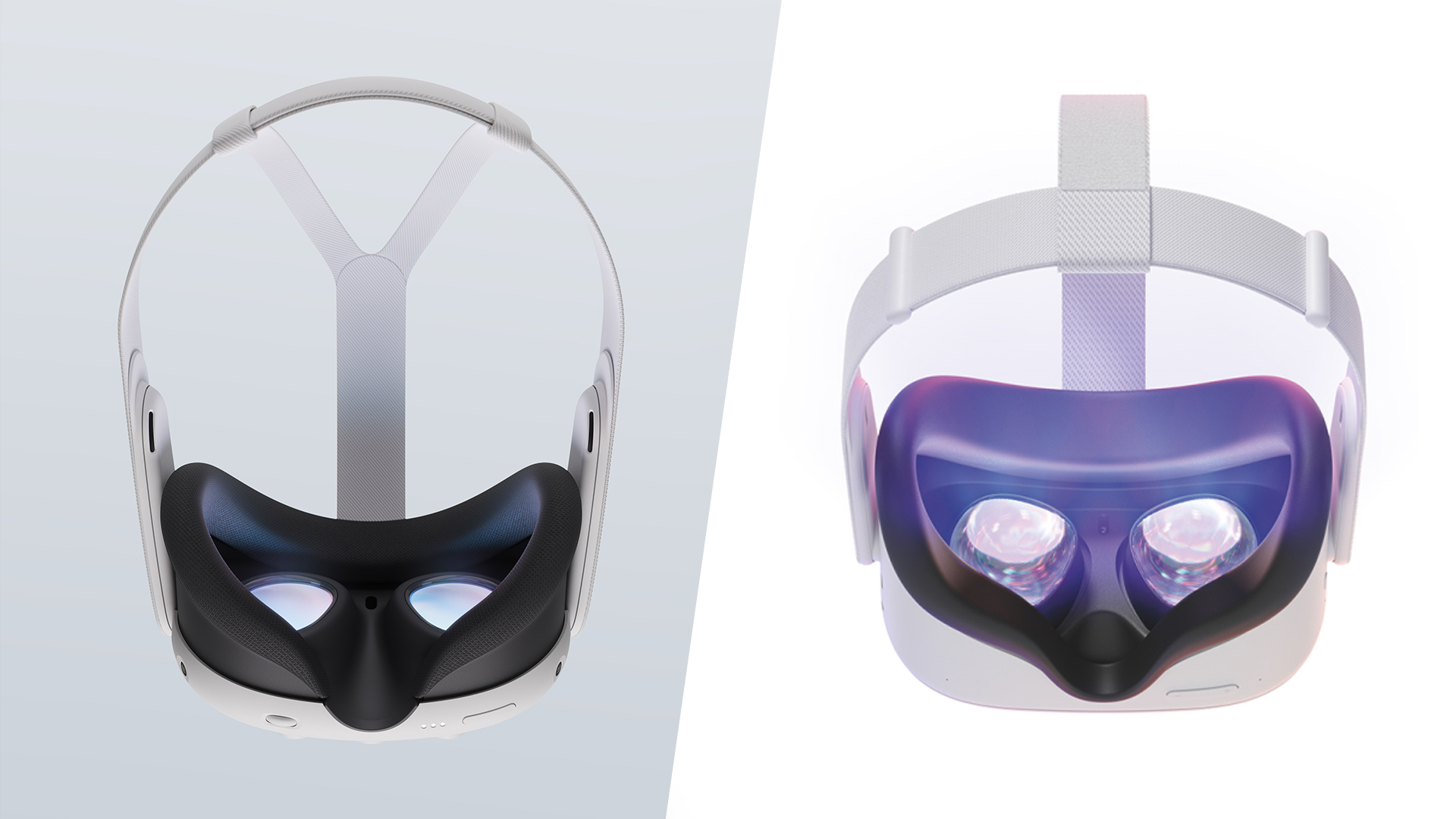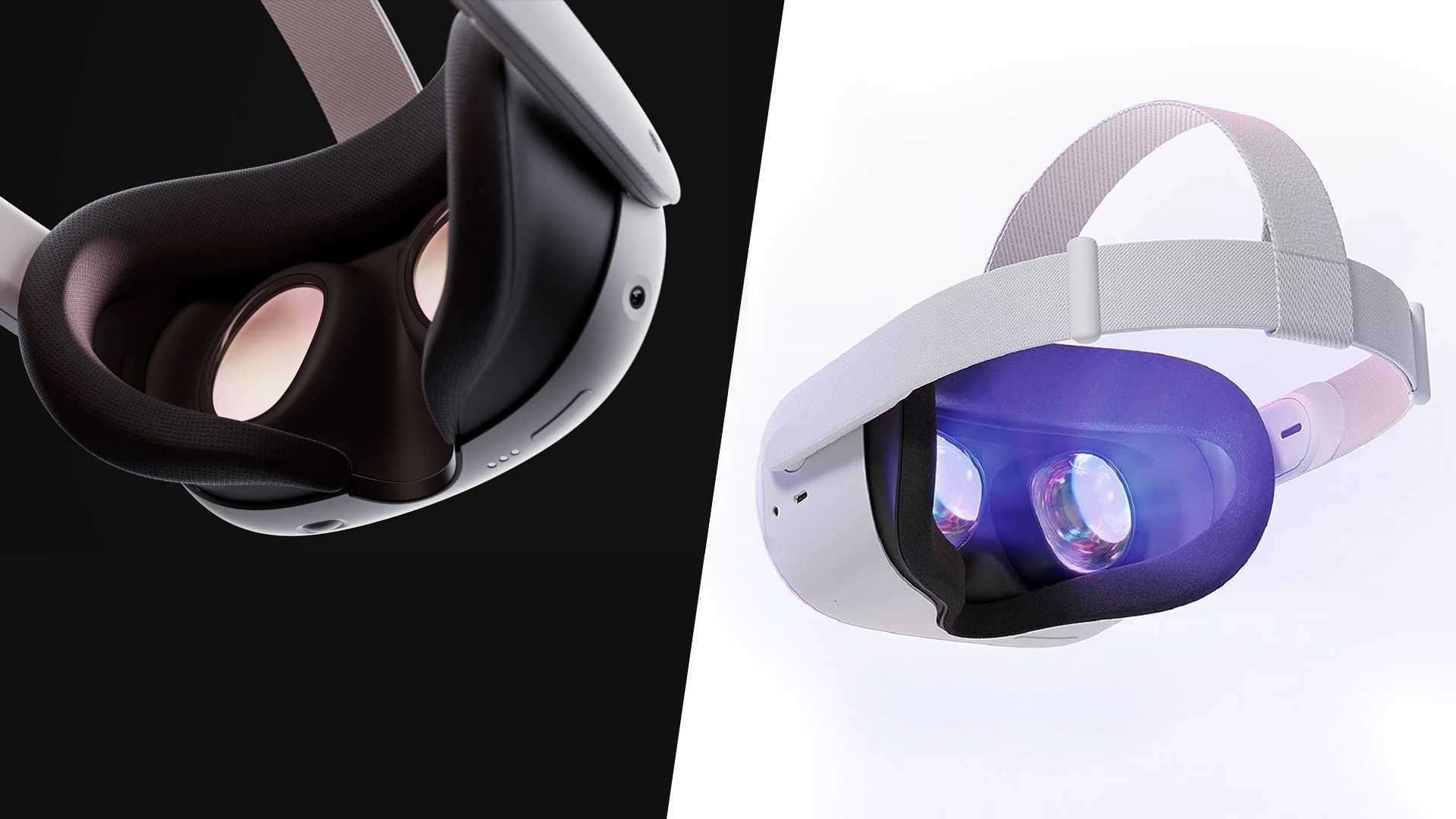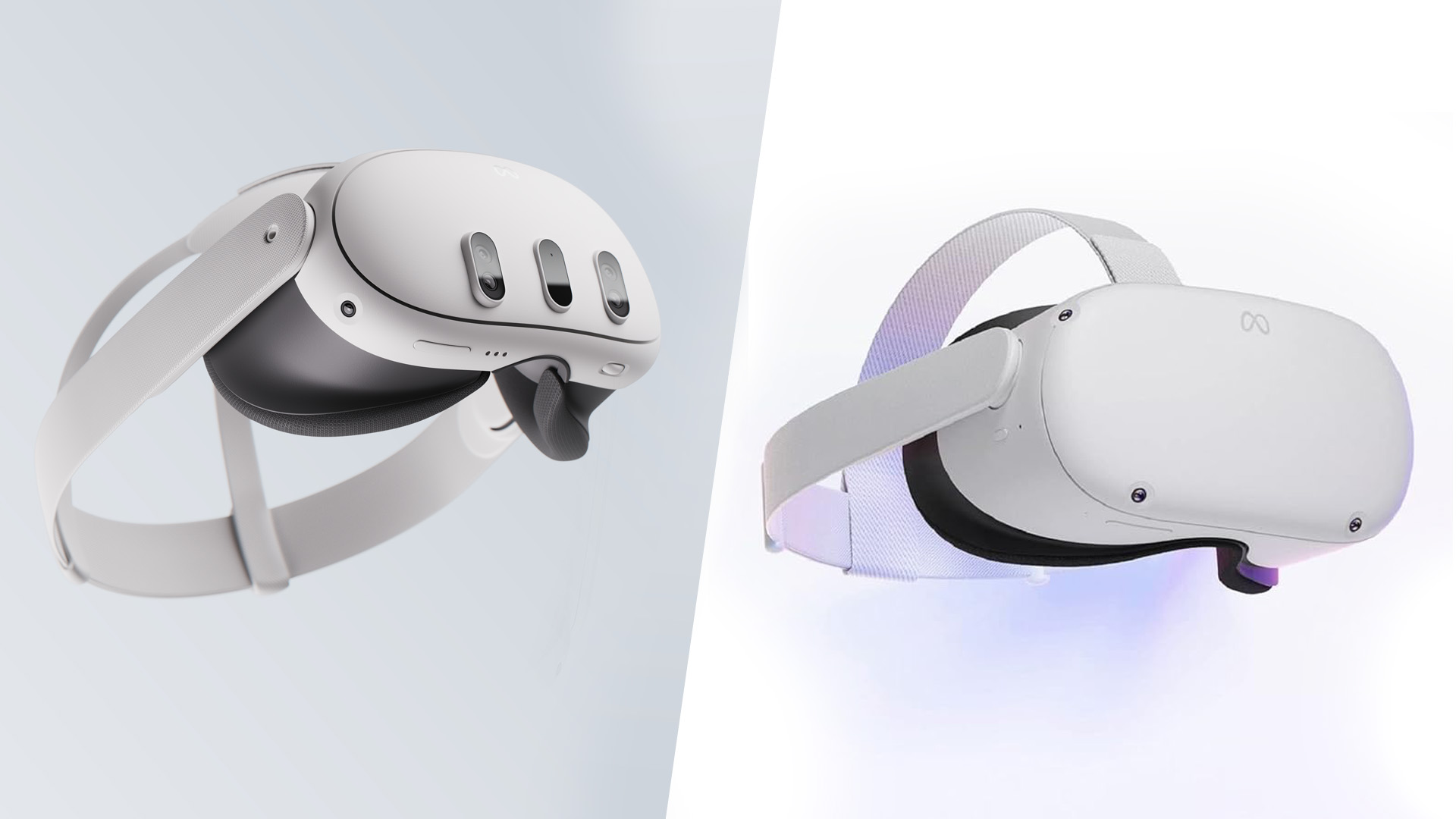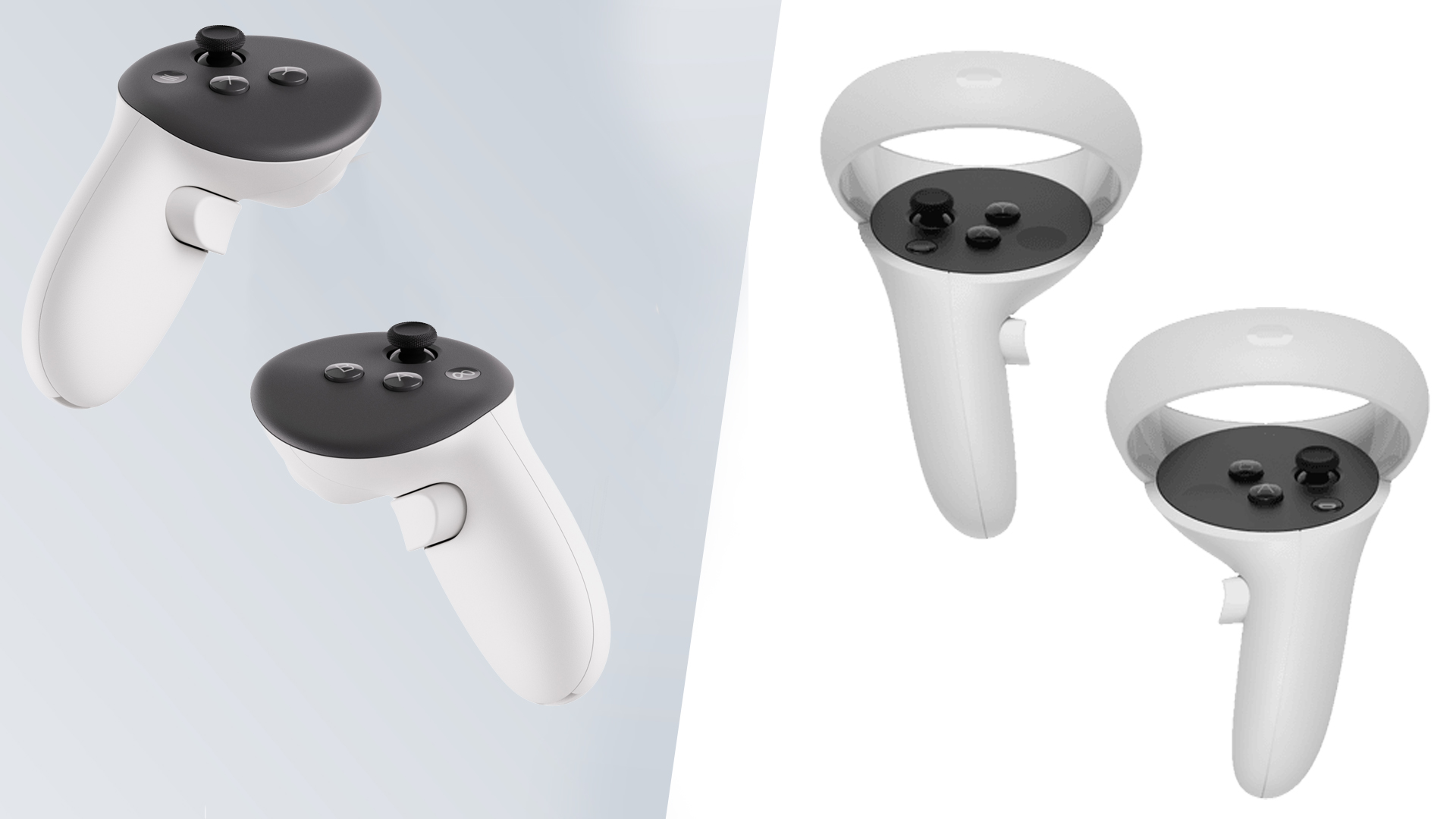Meta Quest 3 vs Oculus Quest 2: 8 key improvements you need to know about

Meta first announced the Quest 3 months before it was due to be released, largely to wrest attention away from Apple for a moment amid the Apple Vision Pro announcement. Today, we’re not interested in Apple’s headset, though. We’re talking about the Meta Quest 3 and how it compares to the Oculus Quest 2.
Meta may not have had much success in getting its metaverse concept off the ground, but you know what? The Meta Quest 3 is a major level-up of mainstream standalone VR that improves upon the Quest 2 in almost every single way.
Sure, it’s not as out there as an Apple Vision Pro, and its games may never look as gorgeous as those of the Sony PSVR 2, however, this is the friendly face of VR, AR, and XR. Here’s what’s new to justify the price bump from the $299 / £299 launch cost of the 128GB Quest 2 to the $499 / £499 Quest 3.
1. Pancake lenses versus fresnel
The Meta Quest 3 uses pancake lenses, a rather different design to the fresnel lenses of the Meta Quest 2. Meta put these in the pricey Meta Quest Pro, but we already knew these could be made fairly affordably as they are also seen in the Pico 4.
Pancake lenses suffer from fewer image quality issues than fresnel ones. There’s less distortion of the geometry of the image, where the picture ends up stretched out at the corners. And pancake lenses suffer much less from chromatic aberration. This is where different colors pass through the lens at different points, causing a form of blurring with color distortion. It’s quite noticeable in the Meta Quest 2 if you're looking for it.

These two factors means pancake lenses tend to deliver a sharper-looking image. Pancake lenses are thinner and lighter too — handy for making compact (and hopefully more comfortable) VR headsets.
Pancake lenses can unfortunately struggle with brightness. Because the lens elements are more squished together in a pancake lens (hence the name) this makes it a relatively inefficient lens design. This means the VR headset display panel itself needs to be brighter in order to deliver the same brightness level as a final fresnel-lens image.
Sign up for breaking news, reviews, opinion, top tech deals, and more.
That said, the issue can be mitigated by using brighter displays, so overall the pancake lenses found in the Quest 3 are better.
2. Higher resolution
Meta has given the already-sharp Quest 2 a resolution bump in the Quest 3. We’re going from 1920 x 1832 pixels per eye to 2064 x 2209 pixels.
This may look like a modest jump particularly in terms of the horizontal resolution, however, when you combine this pixel bump with the added clarity of a well-implemented pancake lens solution, we’re looking at a notable increase in overall clarity.
The Meta Quest 3 also kicks off with 120Hz as standard, as well as a 90Hz mode. This comes as no surprise, of course. The Meta Quest 2 launched as a 90Hz headset and had a 120Hz experimental mode, which gradually became part of the standard feature set.
3. Actual 3D color vision
The Quest 3 is the first of the Meta VR headsets to use two color cameras to provide 3D passthrough. There’s no dedicated passthrough camera on the Quest 2 at all. Its image of your surroundings is made up of the feed of low-quality tracking cameras, which is why it appears so blotchy and basic.
The Meta Quest Pro uses only a single color camera with this data then overlayed onto the information derived from the other tracking cameras. The end result is an image that is fairly accurately mapped out to the real world, but the picture is very grainy and dark.
The Quest 3’s dual color cameras represent a fairly major upgrade that beats all the other big names at the price. The Pico 4 also only has one RGB camera, just like the Quest Pro, and it's like you're viewing the world through a fish-eye lens which can be disorienting.
4. Much higher-res passthrough
A focus on passthrough also results in dramatically improved passthrough image quality, which is essential for a decent AR or mixed reality experience.
Meta says the Quest 3 has 10 times the number of passthrough pixels as the Quest 2 and (the bit that really impressed us) three times as many as the Quest Pro. That said, the Quest headsets really needed this lift as neither headset’s passthrough is all that impressive or even worth using. Meta says the passthrough on the Quest 3 achieves 18 pixels per degree (ppd), which is a little lower than the 25ppd of the display itself.

A little more context here is important too, though. Lens company Hypervision estimates the Vision Pro’s display density at 34-40ppd, miles ahead of the Meta Quest 3.
Pixel density that appears perfect to a well-functioning human eye starts at around 60ppd. Apple’s Vision Pro gets close enough to make working via VR tenable. It’s kinda the whole point of that headset. The Meta Quest 3 isn't going to get near that level, nor did we expect it to given how much more affordable this headset is.
The thing to watch for is that you're using the Quest 3 in a well-lit space. We expect the passthrough won't look too great in your dingily lit spare room because, like any camera, these headset cameras will struggle in lower light. Nevertheless, passthrough may be the starkest improvement in the Quest 3.
5. Wider field of view
The Meta Quest 3 has a wider field of view (FOV) than the Meta Quest 2, and basically takes on the specifications of the Meta Quest Pro. That’s 110 degrees horizontally, 96 degrees vertically.
Meta hasn’t actually posted specs for the Quest 2’s FOV because they are nothing to shout about. It has said however that the new generation is a 15% improvement. VRCompare estimates the older model at up to 97 degrees horizontal, and 93 degrees vertical which works out to around a 15% greater FOV horizontally.
A larger field of view means the VR/AR image consumes more of your vision, which makes for a more immersive experience and one that feels less cramped.
6. More power
The Meta Quest 3 has a much more powerful processor than its predecessor. It’s the Qualcomm XR2 Gen 2, which is even newer and more powerful than the processor of the Meta Quest Pro.
It’s around 2.5x faster than the Meta Quest 2’s SoC, but real-world performance is going to depend significantly on power/battery balancing and cooling. Phones with similar hardware drop to as little as 45% of their peak performance after a few minutes because they can’t handle the heat.
This is a perennial issue with powerful mobile devices because they typically don’t have the active cooling of a PC or games console. They use passive cooling instead, which means heat pipes and vapor chambers.
These can move heat away from the components that generate it, but don’t accelerate moving it out of the phone entirely in the way a fan can. Mobile devices also, of course, throttle performance to maintain battery life and manage heat which is something Meta has done for both the Quest 2 and Pro (only recently un-throttling them somewhat to give the headsets a performance boost)
Still, in theory, we know the relative graphics performance here because the same GPUs are also used in phones. The Quest 3 has an Adreno 740, seen in Snapdragon 8 Gen 2 phones like the Samsung Galaxy S23, while the Quest 2 has an Adreno 650, used in the Samsung Galaxy S20 Ultra. They’re separated by three generations over in the phone world so expect to see some solid improvements.
7. New controllers
If you’ve ever used a Quest 2, you’ll immediately notice the Quest 3 controllers do not have those funny rings that hover above your knuckles. These are used as positional tracking aids in the last generation. The new Quest controllers don’t need them with the headset instead relying on improved AI and IR LEDS in the controllers.

They also have a version of TruTouch haptics, as seen in the Meta Touch Pro controllers, for more refined haptic feedback than the last-generation headset. You might think of them as a slightly stripped-back take on those newer Quest Pro controllers as it’s basically what they are.
The Meta Quest 3 can also be used with the Pro controllers. But when they cost more than half as much as the headset itself, that may not be that appealing for new buyers.
8. More RAM, and a higher storage option
The two flavours of the Meta Quest 2 are 128GB and 256GB storage, each of which has 6GB RAM.
Meta hasn’t altered the starting storage. You can still get a 128GB Quest 3. However, the enthusiast model has 512GB, clearly aimed at an audience who will want to keep lots of titles installed at one time.
Both Quest 3 headsets also have 8GB RAM, 2GB more than the predecessor generation. The Quest Pro still has the most, though, 12GB. More RAM would have been appreciated but at its relatively affordable price some performance restrictions are to be expected from the Quest 3.
Early verdict

If you’re upgrading from the Meta Quest 2 to Meta Quest 3 we think you'll notice a lot of differences. Mixed reality will be the biggest improvement finally being upgraded to color passthrough that is generated using two actual color cameras – but graphics and performance in general will also see a big boost.
The rest of the improvements tie into each other, to make the VR image that important step up from what we had before. Higher resolution, better lenses, wider FOV — it’s all part of the same equation. With all of these upgrades, the Quest 3 should let mainstream hands-free VR take an important step forward.
You might also like

Andrew is a freelance journalist and has been writing and editing for some of the UK's top tech and lifestyle publications including TrustedReviews, Stuff, T3, TechRadar, Lifehacker and others.